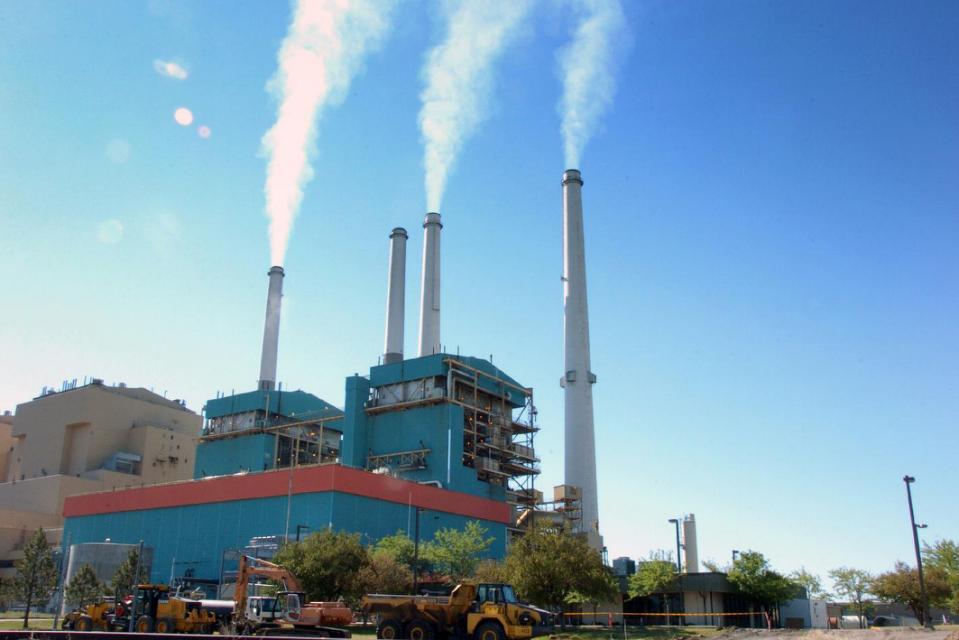Conservation groups sue feds to protect Red Snapper, promote reform

Two environmental groups are suing the Trump administration for extending the red snapper season in federal and state waters within the Gulf of Mexico this year. The Environmental Defense Fund and Ocean Conservancy filed a lawsuit on Monday in the U.S. District Court for the District of Columbia against a U.S. Department of Commerce June decision that allowed recreational anglers to fish for red snapper in federal and state waters for 39 weekend days Friday through Labor Day. According to the groups, the decision “puts red snapper recovery at risk, jeopardizing fishing businesses and recreational fishing for the species. It also violates several provisions of federal law.” “The way we manage recreational red snapper fishing stinks, and saltwater anglers like me are demanding change,” said Robert Jones, Director of Environmental Defense Fund’s Gulf of Mexico Oceans Program. “The recovery of the species is an incredible opportunity. I was recently offshore from Galveston and the water is teeming with red snapper. But instead of anglers and recreational fishing businesses reaping the benefits, we are stuck in a downward spiral of failure. This lawsuit is about catalyzing change.” Jones continued, “Year-round state-water seasons combined with minuscule federal seasons suffocate our access to the best offshore fishing grounds. And I sure as heck don’t want to return to the days when my dad and I could barely find a red snapper due to decades of overfishing. What we demand is innovative, solutions-oriented reform that harnesses new approaches like Louisiana’s LA Creel program, gives us flexible access, and ensures that future generations of Americans can enjoy the thrill of catching red snapper.” The extended season came after the NOAA Fisheries in May approved a recreational season of three days — June 1-3, which fishing enthusiasts decried as being far too short. Alabama lawmakers quickly took action reaching out to federal officials to lengthen the season, which was the shortest ever in the Gulf of Mexico. After extensive debate on both the Gulf Coast and Capitol Hill, the Department of Commerce approved the extended season. According to the lawsuit, Commerce Secretary Wilbur Ross and two federal agencies — the National Marine Fisheries Service and the National Oceanic and Atmospheric Administration — were listed as the defendants.
Gary Palmer opposes new EPA methane rule that punishes energy production

U.S. Rep. Gary Palmer (AL-06) is taking a stand against the Environment Protection Agency‘s newly proposed rule that would apply to new or modified oil or natural gas sources. The proposal aims to cut methane by 40 to 45 percent of the 2012 levels by 2025 and would require drillers to plug leaks and capture lost gas in wells intended to extract only oil. The EPA said the move was a commitment by the Obama administration to take action on climate change and protect public health. However, Palmer believes the rule is designed to discourage the development of America’s vast untapped energy reserves and to increase the cost of energy and will disproportionally hurt the poorest and most vulnerable Americans. “In 2014, the EPA noted that methane emission from fracking has fallen 73 percent since 2011, and overall methane emission from U.S. natural gas emissions has declined by at least 15 percent percent since 1990,’’ said Palmer, a member of the U.S. House Science, Space and Technology Subcommittee on Environment. “The research noted that a small number of sites accounted for the majority of those emissions, suggesting that technology already in use across the industry is effectively managing methane leakage.” Chairman of the U.S. House Science, Space and Technology Committee, U.S. Rep. Lamar Smith (TX-21), shares Palmer’s concerns saying this is another sign of the EPA’s opposition to responsible energy development. “The EPA’s proposed methane rule is yet another example of the Obama administration’s war on American energy jobs,” Smith said. “The EPA’s own data shows that methane emissions in the United States decreased by almost 15 percent between 1990 and 2013, yet EPA is forging ahead with this extraneous and unnecessary regulation. EPA should stop. According to the EPA’s own data, the current leakage rate is only about 1.5 percent, well within the recommended limits of the scientific community’s standard of 2-3 percent of total production. “EPA’s data seems to agree that we’re controlling methane leakage,’’ Palmer said. “And data from a high profile environmental group like the Environmental Defense Fund implies methane emissions are not a problem. So this begs the question, why is the EPA proposing unnecessary regulations?”
U.S. Supreme Court rejects president’s attempt to limit power plants

The U.S. Supreme Court ruled Monday against the Obama administration’s attempt to limit power plant emissions of mercury and other hazardous air pollutants, but it may only be a temporary setback for regulators. The justices split 5-4 along ideological lines to rule that the Environmental Protection Agency did not properly take costs into account when it first decided to regulate the toxic emissions from coal- and oil-fired plants. The EPA did factor in costs at a later stage, when it wrote standards that are expected to reduce the toxic emissions by 90 percent. But the court said that was too late. The rules, which took effect in April, will remain in place while the case goes back to a lower court for the EPA to decide how to account for costs, environmental advocates say. They were supposed to be fully in place next year. At issue was whether health risks are the only consideration under the Clean Air Act. The challenge was brought by industry groups and 21 Republican-led states, which argued that the regulations were too costly for coal miners, businesses and consumers. Writing for the court, Justice Antonin Scalia said the EPA was unreasonable in refusing to consider costs at the outset. “The agency must consider cost – including, most importantly, cost of compliance – before deciding whether regulation is appropriate and necessary,” Scalia said. In dissent, Justice Elena Kagan said it was enough for the EPA to consider costs later in the process. “Over more than a decade, EPA took costs into account at multiple stages and through multiple means as it set emissions limits for power plants,” Kagan said. She was joined by the court’s liberal members. The EPA said it is reviewing the court’s decision and will determine any appropriate next steps once a review is completed. “EPA is disappointed that the Supreme Court did not uphold the rule, but this rule was issued more than three years ago, investments have been made and most plants are already well on their way to compliance,” EPA spokeswoman Melissa Harrison said. Indeed, more than 70 percent of power plants already have installed controls to comply with the rules, said Vicki Patton, an attorney at the advocacy group Environmental Defense Fund. “EPA already has an economic analysis that it can rely on to demonstrate that the public health benefits of the standards far outweigh the costs,” Patton said. The case is the latest in a string of attacks against the administration’s actions to use the Clean Air Act to rein in pollution from coal-burning power plants. Senate Majority Leader Mitch McConnell of Kentucky called the ruling “a cutting rebuke to the administration’s callous attitude.” He said it “serves as a critical reminder” to state governors, who are awaiting more EPA rules this summer aimed at curbing pollution from coal-fired power plants that is linked to global warming. States have already challenged those rules even before they are final, and Congress is working on a bill that would allow states to opt out of any rules clamping down on heat-trapping carbon dioxide. White House spokesman Josh Earnest called out McConnell for reprising his suggestion that governors should flout EPA regulations. He said McConnell was not advocating in the best interests of the American public. House Speaker John Boehner, R-Ohio, suggested that the high court ruling gives opponents an opening “to protect the jobs and energy that are still at risk under this administration.” In the case of the mercury rules, the costs of installing and operating equipment to remove the pollutants before they are dispersed into the air are hefty — $9.6 billion a year, the EPA found. But the benefits are much greater, $37 billion to $90 billion annually, the agency said. The savings stem from the prevention of up to 11,000 deaths, 4,700 nonfatal heart attacks and 540,000 lost days of work, the EPA said. Mercury accumulates in fish and is especially dangerous to pregnant or breastfeeding women, and young children, because of concern that too much could harm a developing brain. A disproportionate share of the 600 affected power plants, most of which burn coal, are in the South and upper Midwest. Republished with permission of the Associated Press.


